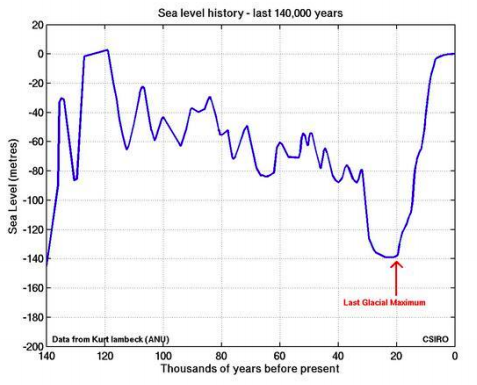The Holocene History of Port Phillip Bay
Summary
In his article devoted to the topic of the origin of Port Philip Bay Holdgate (2011) makes a rather bold statement concerning the origin of the port. According to the researcher, the area used to be entirely dry, with only a small lake in the place of the bay. Nowadays, the area is represented vastly by numerous muddy regions. As the scientist explains, the phenomenon of the port’s emergence in the dry environment can be attributed to the fact that considerable water shrinkage could be observed in the area roughly 1,000 years ago (Cauchi 2011, para. 7).
Secrets of the Core
The research proposed to test the hypothesis suggested by Holdgate will require that samples of the earth core underneath the bay should be taken in order to verify the correctness of the supposition. It is expected that a study of the sediment core of the area will contain a large amount of foraminifera and the related elements, including shells and sand. A bay floor hiatus in the area of 2,800–1,000 cal. Yr. BP is expected to be located.
Specifically, the Holocene record of the designated area needs to be analyzed. It is also assumed that the bay mud floor will contain sandy lithologies, therefore, exposing its unique origin and making it quite obvious that the area used to be entirely dry. Specifically, shelly mud and river-like incisions are expected to be discovered in the area of Port Philip Bay as proof of the fact that the area used to be dry once.
Shells in the Bay
In case Holdgate’s hypothesis is correct, the area, which is now represented by the Port Philip Bay, might have been experiencing a considerable drop in the average sea level in the central basin. The reasons for the above-mentioned conclusion are quite obvious; seeing that the author mentioned a consistent dryness of the area on the above-mentioned time slot, it will be quite legitimate to assume that the sea level decreased significantly at the time. Moreover, it can be suggested that the sea level also stabilized in the given time period and approached the one that can be observed at present. In other words, the blocking of the channels and the delay in the marine transgression (Cauchi 2011) could be observed in the specified area 2,800–1,000 years ago (Crockett & Keough 2014).
Sea Levels, Dunes, and Dates
Sea Levels

Based on the graph provided, the sea levels for the southeastern coast of Australia have changed quite drastically over thousands of years of sea-level history. According to the data introduced in the graph, the sea level had been quite low (–140 meters) up until 120 years B. P., when it rose to 0 meters. Over the course of the next several thousands of years, the sea level was gradually decreasing until it reached the mark of –140 meters again around 20,000 years B.P., as the chart provided shows in a very graphic manner. The consistent increase in the sea level, which followed and has been maintained up to these days, can be viewed as the effect of the global warming process. More importantly, the latter factor is likely to trigger a further increase in the average sea level (Schaeffer, Hare, Rahmstorf & Vermeer 2014).
Data Comparison
The sea-level record, which is indicated in Zhou’s paper, can be considered somewhat different from the data provided in the graph mentioned above. The differences in the findings can be explained by the high level of approximation, which was used in Zhou’s paper in order to arrange the data as concisely and adequately as possible. However, apart from certain inaccuracies in the delivery of the data, there are significant differences between the information provided in the first and the second graph. Specifically, the data concerning the last glacial maximum, which was stated to be around the sea level of – 140 meters, was reduced to – 150 meters of ea level in the report provided by Zhou et al. (1994). However, apart from the above-mentioned inconsistency, there are very few minor differences between the two methods of data representation.
TL Dates
A closer look at the TL (thermoluminescent) dates for Diamond Bay display the obvious tendency for the area in question to be represented by the cliff top dune sand. In other words, erosion has had a significant effect on the Diamond Bay area development. In addition, the fact that the area in question is represented by the dark brown Paleosol clay displays the fact that the specified region used to be dry and that the sea level has changed drastically (Eze & Meadows 2014). Thus, it can be assumed that the aeolianites were formed in the Pleistocene era, i.e., ca. 9,900 years ago in the given area, the clifftop dune sand creating the pressure required for the process to occur (Erginal et al. 2012).
Reference List
Cauchi, M 2011, ‘10,000-year bay theory doesn’t hold water,’ The Age, Web.
Crockett, P F & Keough, M G 2014, ‘Ecological niches of three abundant Caulerpa species in Port Phillip Bay, southeast Australia,’ Aquatic Botany, vol. 119, pp. 120–131.
Erginal, A E, Kiyak, N G, Ekinci, Y L, Demirci, A, Ertek, A & Canel, T 2012, ‘Age, composition and paleoenvironmental significance of a Late Pleistocene eolianite from the western Black Sea coast of Turkey,’ Quaternary International, vol. 296, pp. 168–175.
Eze, P N & Meadows, M E 2014, ‘Mineralogy and micromorphology of a late Neogene paleosol sequence at Langebaanweg, South Africa: Inference of paleoclimates,’ Palaeogeography, Palaeoclimatology, Palaeoecology, vol. 409, pp. 205–216.
Schaeffer, M, Hare, W, Rahmstorf, S & Vermeer, M 2014, ‘Long-term sea-level rise implied by 1.5◦ C and 2◦ C warming levels,‘ Nature Climate Change, vol. 24, no. 1, pp. 1–4.
Zhou, L, Williams, M A J, and Peterson, J A 1994, ‘Late quaternary aeolianites, palaeosols and depositional environments on the Nepean Peninsula, Victoria, Australia,’ Quaternary Science Reviews, vol. 13, no. 1, pp. 225–239.